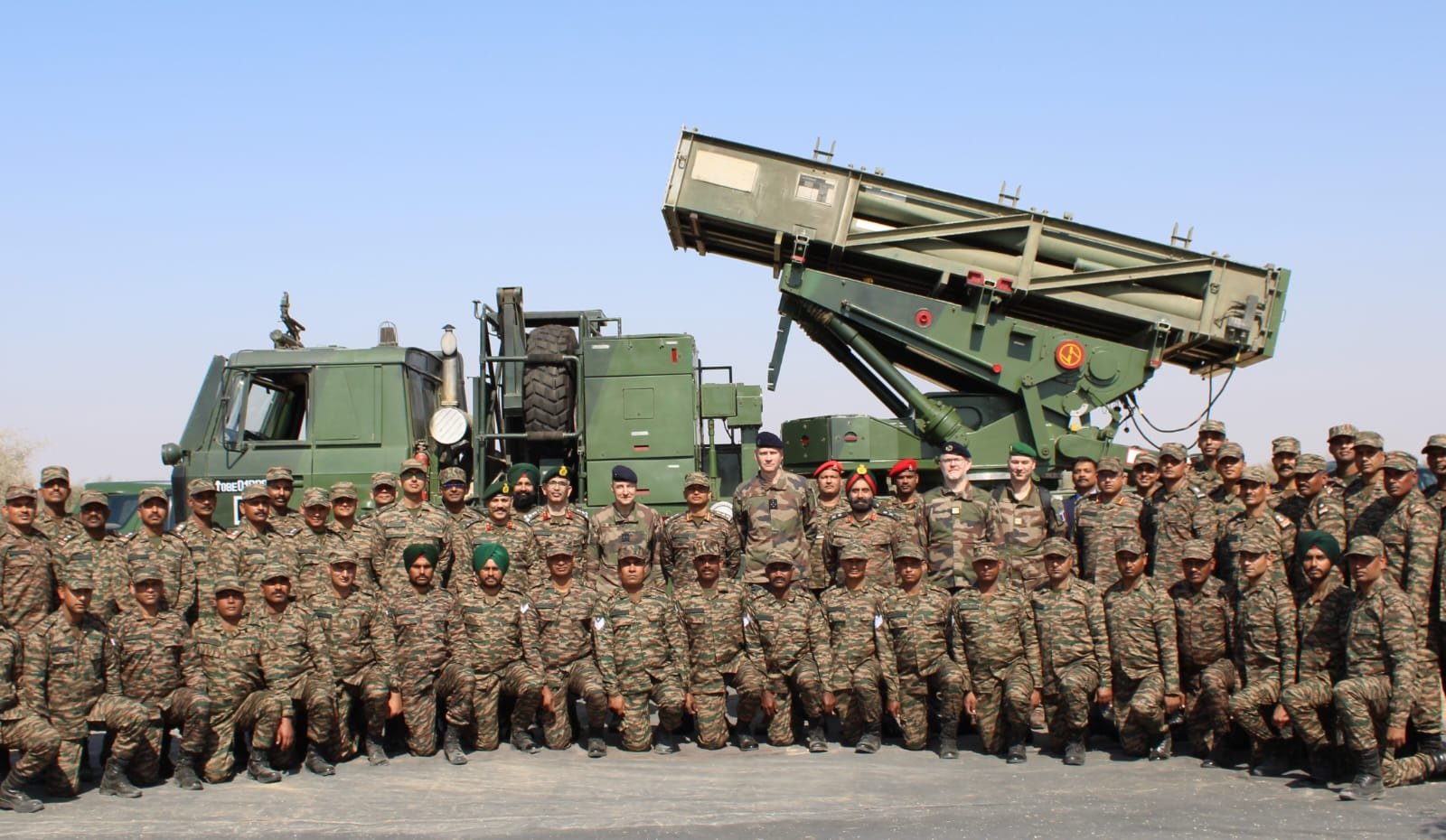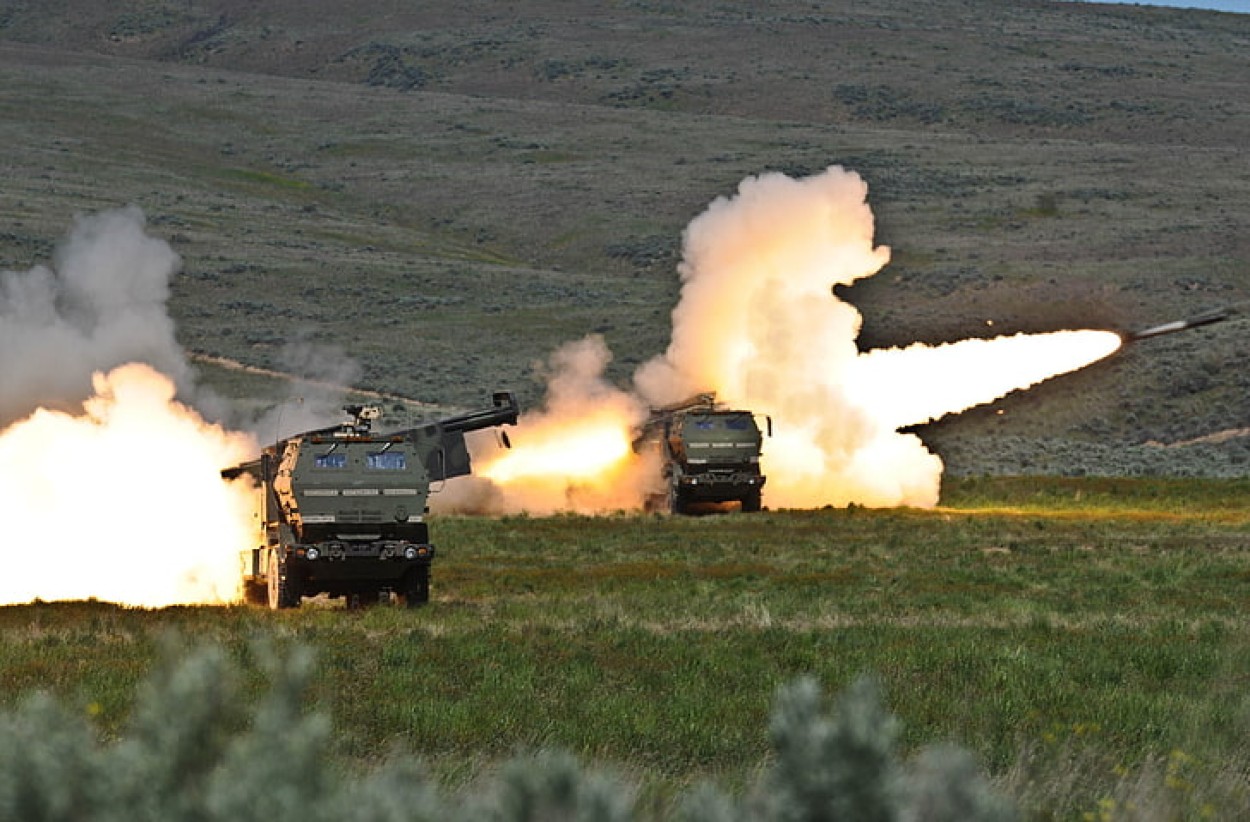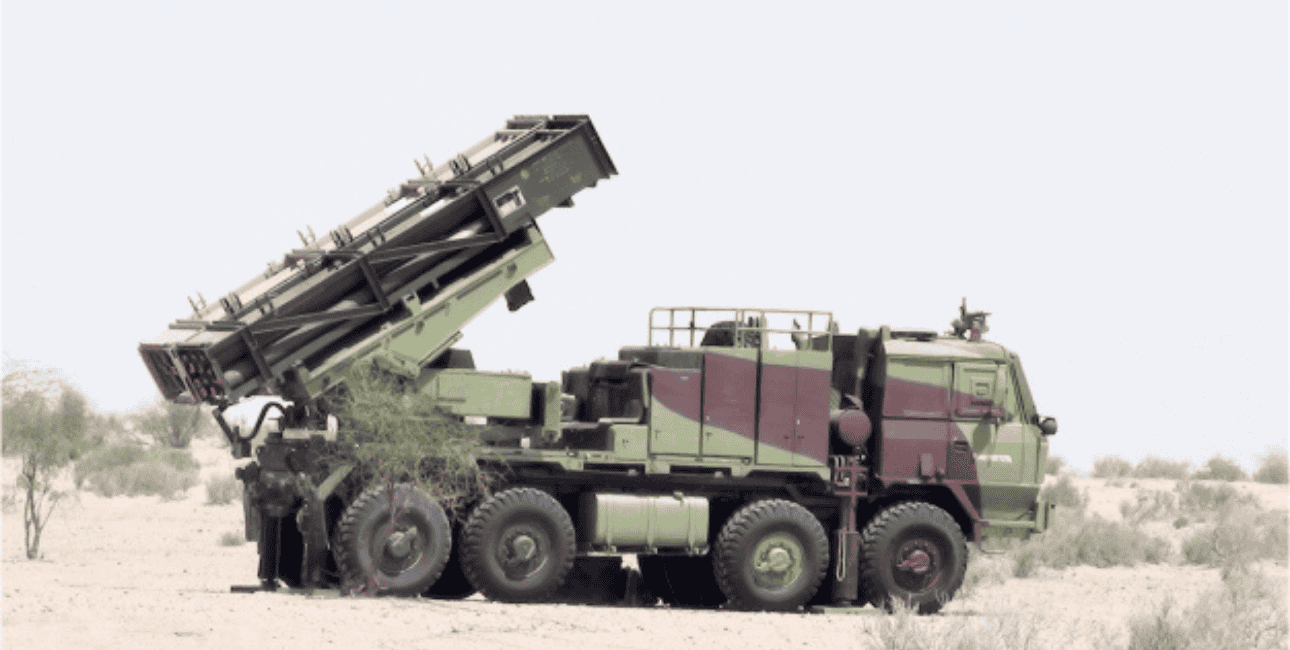Indians have often touted their indigenous Pinaka Multi-Barrel Rocket Launcher System (MBRLS) as being at par with American HIMARS. Now, a NATO country, France, has openly expressed interest in New Delhi’s home-grown long-range artillery rocket system.
On a visit to India, French Army’s Brigadier General Stephane Richou revealed that Paris is evaluating the Pinaka system for its forces.
“We are evaluating Pinaka because we need a system like that and evaluating this among the other systems of the highest countries… This is much more than a business partnership; this is cooperation,” Brigadier Richou told an Indian news agency.
Incidentally, in February this year, French Chief of Army Staff General Pierre Schill witnessed firsthand the power of the Pinaka system at the Pokhran ranges in the Thar desert.

While France is still evaluating Pinaka, another country, Armenia, has already ordered it and received its delivery via Iran in 2023.
While Pinaka and HIMARS are both long-range artillery rocket systems, they have some crucial differences and also offer some critical advantages over each other.
HIMARS
With the war in Ukraine grinding on and Kyiv’s extensive use of HIMARS on the frontline, this American long-range artillery rocket system has become a popular name among military analysts.
HIMARS stands for High Mobility Artillery Rocket Systems.
The HIMARS consists of a medium-sized tactical truck loaded with six 227-millimeter GPS-guided rockets. It boasts a range of more than 43 miles [69 km]. The rocket is thirteen feet long and known as the Guided Multiple Launch Rocket System (GMLRS).
Each rocket has a 200-pound, high-explosive warhead, and GPS guidance ensures each rocket can land within 16 feet of the designated aiming point.

As per Lockheed Martin, the tactical missile range of the HIMARS is 69 to 499+ km, including the GMLRS, which has a range of 69 km, the Extended-Range Guided MLRS (ER GMLRS), which has a range of 150 km, the Precision Strike Missile (PrSM), which has a range of 499 km, and the Army Tactical Missile System (ATACMS), that has a range of 300 km.
These tactical missiles are mounted on a wheeled chassis and thus offer what is classically known as “shoot and scoot” capability to avoid counter-battery fire.
Lockheed Martin has delivered over 400 HIMARS launchers to the Army, Marine Corps, and international customers.
HIMARS has expanded its global presence and begun serving the international market, including countries such as Jordan, Singapore, Australia, and the United Arab Emirates.
In August, the US State Department approved Norway’s acquisition of HIMARS. However, HIMARS’s current reputation in the international market is cemented owing to the combat experience it has gained in the ongoing Russia-Ukraine war.
The U.S. sent the first four HIMARS to Ukraine in early June 2022, and by late July, Ukrainian forces had claimed to have struck more than 100 “high-value” military targets.
Seeing its success against Russian military targets, the U.S. has, according to Pentagon documents, so far donated over 40 HIMARS to Ukraine.
On its part, Russia has claimed to have destroyed six HIMARS. However, the Kremlin has provided video evidence of only one such strike on HIMARS. Regardless of such claims, the utility of such High-Mobility Artillery Rocket Systems in a protracted war remains beyond dispute.
Pinaka – The Bow Of Lord Shiva
Pinaka Mk-1 is a free-flight artillery rocket area bombardment system with a range of 38 kilometers, quick reaction time, and a high rate of fire. A single Pinaka system fires 12 rockets from a multi-barrel launcher in 44 seconds, while a battery can fire 72 rockets.
The 214mm bore Pinaka Mk-1 rocket has a payload of 100 kilograms and can be fitted with various warheads, such as anti-tank mines and blast-cum-pre-fragmented high explosives.

Thus, a battery can deliver 7.2 tons of payload to a range of 38 kilometers and neutralize a target area of 1000 meters by 800 meters.
India developed the Pinaka system as a replacement for the Russian GRAD BM-21. For an MBRLS to survive in a drone-saturated battlefield, it must be able to shoot and then disappear quickly. The Pinaka Mk-1 has precisely that ability.
The launcher’s Shoot-and-Scoot capability enables it to escape the counter-battery fire. Pinaka support vehicles share similar mobility and logistics.
Designed by the Indian Defense Research and Development Organisation (DRDO), the multiple rocket launcher is already in service with the Indian Army. It has been deployed along the borders with China and Pakistan.
The Pinaka rocket system, named after Lord Shiva’s divine bow, gained its first combat experience in the 1999 Kargil conflict against Pakistan. The battles in the frigid Himalayan mountain ranges saw Pinaka neutralize Pakistani positions on mountain tops.
“The best feature of the Pinaka system is that one regiment can launch as many as 12 rockets in under a minute in multiple directions, and then the regiment can be re-located within minutes,” an official familiar with the system told the EurAsian Times.
The Pinaka MBRL system consists of six launcher vehicles, each equipped with 12 rockets, six loader-replenishment vehicles, two command post vehicles integrated with a fire control computer, and a DIGICORA MET radar.
The Pinaka MBRLS export contract with Armenia in 2023 was India’s first export contract of a genuinely indigenous system with near-zero import content. In the past, major weapon systems exported by India, such as the Dhruv helicopter and Brahmos missile, have featured major foreign OEM assemblies. Export earnings were split between India & the OEMs.
While the Pinaka Mk-1 has a range of 38 km, enhanced Pinaka rockets (Pinaka-ER) have a range of 45 km. The new rockets’ trials were successfully conducted at Balasore and Pokhran in August 2022.
Meanwhile, the DRDO is also developing an enhanced guided version of the rocket system, Pinaka Mk-II, with a range above 60 kilometers. The DRDO has been testing the guided version of Pinaka, which has a range of 75 kilometers. Going ahead, the DRDO plans to enhance its range to over 200 kilometers.
“The enhanced Pinaka has demonstrated a range of 75 km and an ability to strike within 10 meters of where it is aimed, allowing the army to destroy a terrorist camp, or an enemy post, logistics dump or headquarters, without needing to send soldiers across the border,” an Indian defense analyst commented.
Ahead of the Indian Army’s Regiment of Artillery’s 198th raising day in September this year, Regiment Director General Lt Gen Adosh Kumar said, “The indigenous Pinaka Multi-Barrel Rocket Launch (MRLS) system is being widely exploited, and their ability is second to none.”
“We are looking at extending the range of the Pinaka rockets, and a lot of work is going on, first to double and then to almost four times the present range. The Defence Research and Development Organisation (DRDO) is confident of achieving it.”
Even at the Eurosatory 2024 Defence Show in Paris in June this year, many European and Southeast Asian countries had shown interest in the Pinaka systems.
“Some of the European and South East Asian countries have shown interest in the Netra AEW&C aircraft and the Pinaka rocket launcher systems. We are hoping to progress the discussions with the possible customers for these products,” a defense official familiar with the matter had told Indian news agency ANI.
The Indian defense industry, including the public and private sectors, has significantly invested in establishing a production capacity for over 5,000 Pinaka rockets annually. Thus, India can easily meet export orders for Pinaka rockets without compromising domestic defense requirements.
HIMARS vs PINAKA
A quick comparative analysis between HIMARS and Pinaka will show that HIMARS has a considerably longer range. The HIMARS systems provided to Ukraine have a range of 70 kilometers. However, other rockets in HIMARS can extend their range up to 499 kilometers. The Precision Strike Missile (PrSM) in HIMARS has a range of 499 km.
Pinaka Mk-1, on the other hand, has a modest range of 38 kilometers, and the enhanced Mk-II version will have a range of above 60 kilometers. Thus, HIMARS has an advantage over Pinaka when it comes to range.
Pinaka Mark 1 is a free-flight rocket of caliber 214 mm, as opposed to the guided HIMARS of 227 mm. This will imply higher accuracy for the HIMARS. However, as discussed, DRDO is testing a guidance kit for the Pinaka Mk-II rocket to improve accuracy. Once guided rockets are integrated into Pinaka systems, they will be at par with HIMARS.
Pinaka carries a warhead of 100 kg as opposed to the 91 kg warhead of the HIMARS.
The mobility of both systems is at par with each other.
However, Pinaka might have a cost advantage over HIMARS. In August, the US State Department notified Congress of a HIMARS sale to Australia valued at a whopping US$975 million ($1.529 billion) for 22 launchers and associated rockets. Indian Pinaka could cost substantially less.
- Sumit Ahlawat has over a decade of experience in news media. He has worked with Press Trust of India, Times Now, Zee News, Economic Times, and Microsoft News. He holds a Master’s Degree in International Media and Modern History from The University of Sheffield, UK.
- He can be reached at ahlawat.sumit85 (at) gmail.com
- Follow EurAsian Times on Google News




